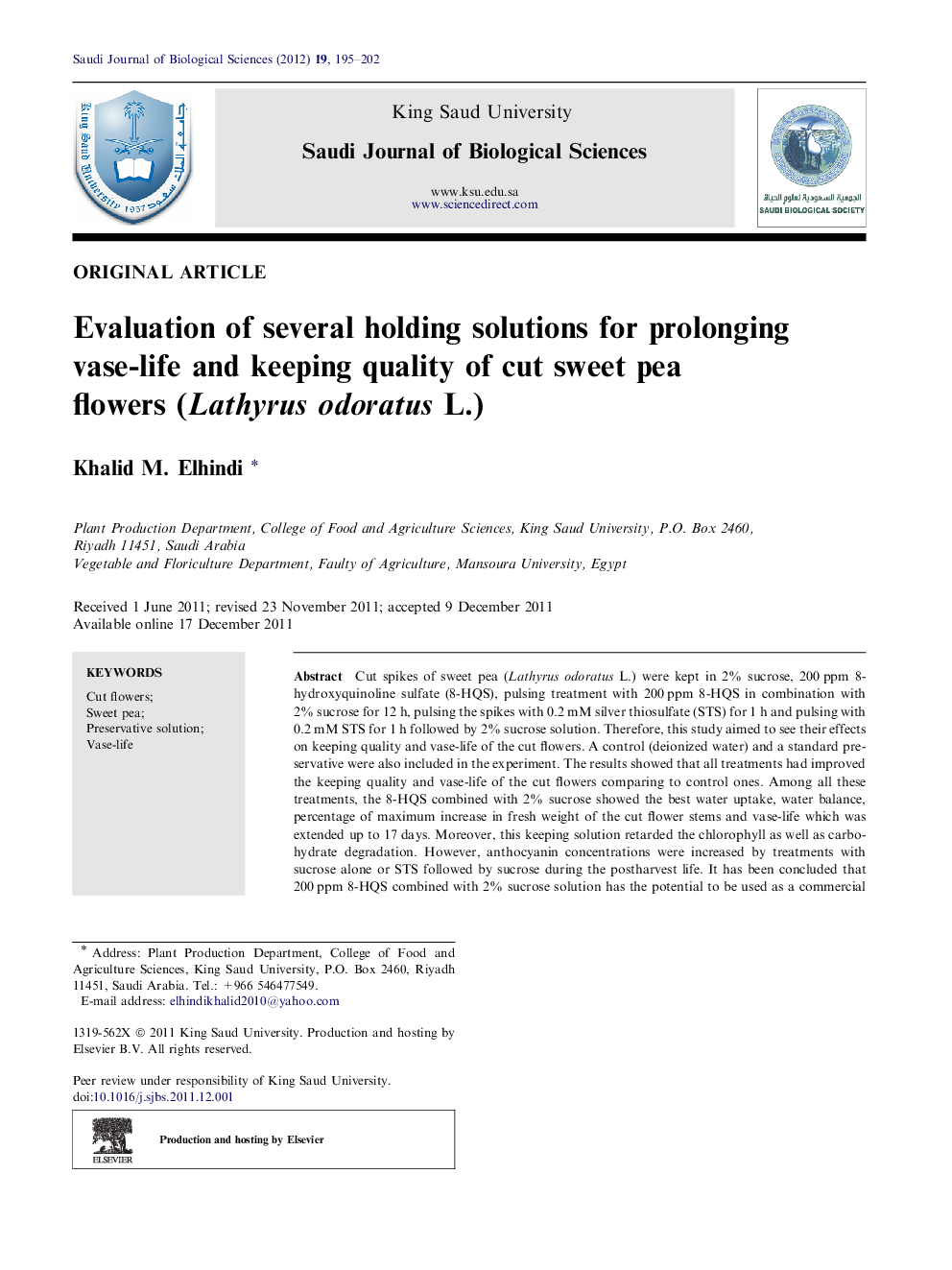| Article ID | Journal | Published Year | Pages | File Type |
|---|---|---|---|---|
| 4406707 | Saudi Journal of Biological Sciences | 2012 | 8 Pages |
Cut spikes of sweet pea (Lathyrus odoratus L.) were kept in 2% sucrose, 200 ppm 8-hydroxyquinoline sulfate (8-HQS), pulsing treatment with 200 ppm 8-HQS in combination with 2% sucrose for 12 h, pulsing the spikes with 0.2 mM silver thiosulfate (STS) for 1 h and pulsing with 0.2 mM STS for 1 h followed by 2% sucrose solution. Therefore, this study aimed to see their effects on keeping quality and vase-life of the cut flowers. A control (deionized water) and a standard preservative were also included in the experiment. The results showed that all treatments had improved the keeping quality and vase-life of the cut flowers comparing to control ones. Among all these treatments, the 8-HQS combined with 2% sucrose showed the best water uptake, water balance, percentage of maximum increase in fresh weight of the cut flower stems and vase-life which was extended up to 17 days. Moreover, this keeping solution retarded the chlorophyll as well as carbohydrate degradation. However, anthocyanin concentrations were increased by treatments with sucrose alone or STS followed by sucrose during the postharvest life. It has been concluded that 200 ppm 8-HQS combined with 2% sucrose solution has the potential to be used as a commercial cut flower preservative solution to delay flower senescence, enhance post harvest quality and prolong the vase-life of sweet pea cut flowers.
